This article was co-authored by Alina Lane, DDS. Dr. Alina Lane is a Dentist who runs All Smiles Dentistry, a general practice dental office based in New York City. After completing a DDS at the University of Maryland, Dr. Lane completed a year-long clerkship in Implantology at the University of Maryland, where she focused on the advanced restoration of dental implants. She continued her advanced education by completing a General Practice Residency at Woodhull Medical Center, an affiliate of the NYU School of Medicine. She received the Woodhull Medical Center Resident of the Year 2012-2013.
There are 11 references cited in this article, which can be found at the bottom of the page.
This article has been viewed 41,631 times.
Deep cleaning, also known as scaling and root planing, allows your dentist to remove plaque below the gumline of your teeth. This procedure helps treat the pockets that form in your gums from periodontal disease. A dentist must perform this procedure for you. Talk to the dentist first about your options and risks. During the procedure, the dentist will scrape away any plaque and smooth over the roots of your teeth.[1] Afterwards, care for your gums to prevent infection.
Steps
Preparing for the Appointment
-
1Schedule an appointment with the dentist.[2] A deep cleaning is usually recommended after periodontitis has already been diagnosed. Set up an appointment with your dentist for your deep cleaning. You may want to do it soon after diagnosis to prevent deeper pockets from developing in your gums.
- If you are diagnosed with severe periodontitis, your dentist may refer you to a periodontist for the deep cleaning. This is a dentist who specializes in gum disease.[3]
-
2Talk to the dentist about laser treatment. In some cases, your dentist may able to remove the plaque using new laser techniques. These are less painful, and they cause less bleeding and swelling after the procedure. If your dentist has access to the technology, ask them if laser treatment might be a good option for you.[4]Advertisement
-
3Give your dentist your medical history. Certain conditions may increase your risk of an infection after the deep cleaning. Inform your dentist of your medical history, including any family history of gum disease. If your dentist knows that you are at increased risk, they can prescribe you an antibiotic to prevent infection. Be sure to tell them if you have:
- Any heart problem that puts you at risk for endocarditis such as HIV, damaged heart valves, or a congenital heart defect
- Any disease or problems with your immune system
- Recently undergone surgery
- Implants, such as an artificial hip or heart valve [5]
- A history of smoking
Going Through the Procedure
-
1Determine where the deep cleaning is needed. Before you begin, the dentist should ascertain which parts of your mouth actually need the deep cleaning. For some people, only one part of the mouth may be affected, and they may not need the procedure in other areas. Other people may be affected throughout the mouth. They will need a full scaling and root planing.[6]
-
2Ask about anesthetics. In most cases, a local anesthetic will be applied to your gums to numb them during the procedure.[7] The most common type of anesthetic is injected into your gums. It will numb your gums, lips, and tongue. Alternatively, your dentist might use a gel. This will only numb your gums.[8]
- If your mouth is numbed, you should not eat until the numbness wears away, as you might accidentally bite yourself.
- You do not need anesthetic, although it is typically recommended. If you are uncomfortable with the use of anesthetics, you can ask your dentist if you may skip it.
-
3Let the dentist do the scaling. The first part of the deep cleaning is the scaling. Your dentist will ask you to open your mouth as wide as you can. Using a hook-shaped tool, the dentist will scrape away plaque from below the gumline. Some dentists may use an ultrasonic device that will remove plaque in a similar manner. Both tools are worked around the tooth at the gumline.[9]
-
4Undergo root planing. Root planing is the second part of the deep cleaning. During planing, the gums around your teeth are smoothed down with a tool to reduce pockets that may have formed between the gum and the teeth.[10]
Caring for Your Gums
-
1Control the bleeding. If your gums are tender or bleeding, you can help treat them by rinsing your mouth with warm salt water.[11] Pressing a piece of damp gauze or a moistened tea bag to the bleeding spot can reduce or stop the bleeding.[12]
- Bleeding will usually stop after a day or two, although some tenderness and soreness may last for up to a week. Call your dentist if you notice bleeding after two days.
-
2Take your medication. Your dentist may prescribe a pill to help prevent infection and reduce pain, or they may give you a special prescription mouthwash. No matter which treatment they provide, follow their directions carefully for using it.[13]
- Sometimes, instead of prescribing you a pill, your dentist will insert medicine directly into your gums. If they do this, avoid eating for twelve hours after the procedure, and do not floss for a week. You may also need to avoid tough, hard, chewy, or sticky foods.
-
3Return for a check-up. At your appointment, your dentist will ask you to schedule another appointment so that they can follow up on your gum care. They will measure how deep the pockets of your gums are following the deep cleaning. If the pockets have gotten larger, they may need to take more drastic action, such as periodontal surgery.[14]
- This second visit may happen a few weeks or months after the procedure.
-
4Practice good oral hygiene. Good mouth hygiene can prevent gum disease from getting worse, and it will reduce the problems that you have in the future. Brush your teeth twice a day, and floss at least once daily.[15]
- Quitting smoking can also help reduce gum problems.
- You should visit your dentist at least once or twice a year for cleanings and check-ups. Your dentist can continue to check the depth of your gum pockets to make sure that the disease is not progressing.
Our Expert Agrees: Another aspect of good gum care is not irritating your gums by biting or chewing on things like pen caps, toothpicks, or rough foods.
Warnings
- If you do not follow your dentist's aftercare instructions, your periodontitis may get worse.⧼thumbs_response⧽
- During deep cleaning, bacteria from the tooth can enter your bloodstream. For most healthy individuals, this does not pose a risk, but for people with other health conditions, it may cause an infection.[17]⧼thumbs_response⧽
References
- ↑ https://www.mouthhealthy.org/en/az-topics/s/scaling-and-root-planing
- ↑ Alina Lane, DDS. Board Certified Dentist. Expert Interview. 21 April 2020.
- ↑ https://www.nidcr.nih.gov/OralHealth/Topics/GumDiseases/PeriodontalGumDisease.htm#deep
- ↑ https://www.perio.org/consumer/laser-therapy.htm
- ↑ https://ringmerdental.co.uk/dentist-asks-medical-history/
- ↑ https://askthedentist.com/category/procedures/teeth-cleaning/
- ↑ Alina Lane, DDS. Board Certified Dentist. Expert Interview. 21 April 2020.
- ↑ https://www.dentalfearcentral.org/faq/deep-cleaning/
- ↑ https://www.mouthhealthy.org/en/az-topics/s/scaling-and-root-planing
- ↑ https://www.mouthhealthy.org/en/az-topics/s/scaling-and-root-planing
- ↑ Alina Lane, DDS. Board Certified Dentist. Expert Interview. 21 April 2020.
- ↑ https://www.fiandacaperiodontics.com/scaling-and-root-planing.html
- ↑ https://www.mouthhealthy.org/en/az-topics/s/scaling-and-root-planing
- ↑ http://www.ada.org/en/~/media/ADA/Publications/Files/ADA_PatientSmart_Treating_Perio
- ↑ Alina Lane, DDS. Board Certified Dentist. Expert Interview. 21 April 2020.
- ↑ https://www.babycenter.com/404_is-it-safe-to-have-my-teeth-cleaned-during-pregnancy_1246910.bc
- ↑ https://askthedentist.com/category/procedures/teeth-cleaning/


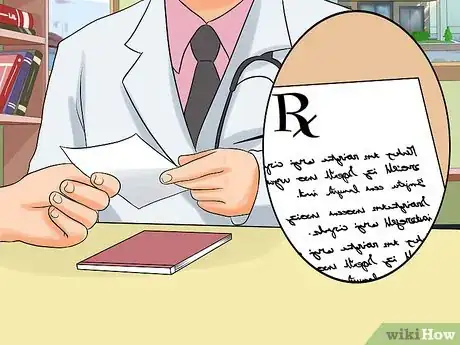

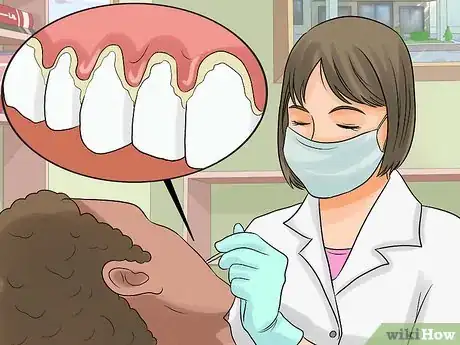


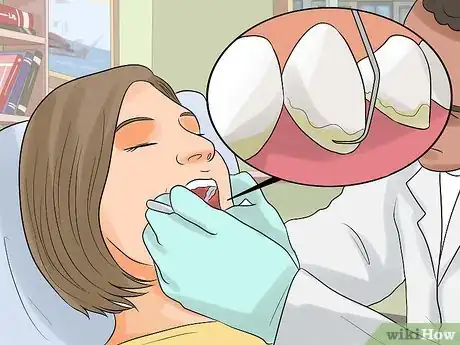



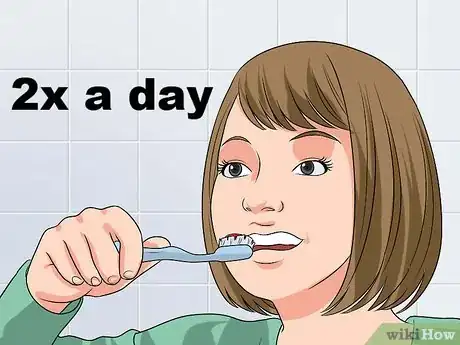









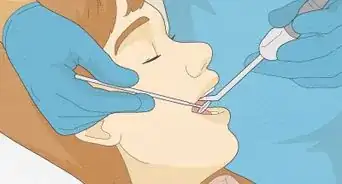
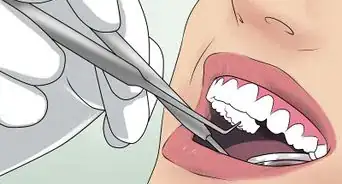
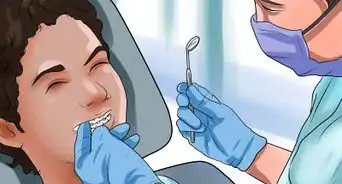











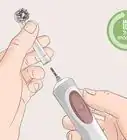



































Medical Disclaimer
The content of this article is not intended to be a substitute for professional medical advice, examination, diagnosis, or treatment. You should always contact your doctor or other qualified healthcare professional before starting, changing, or stopping any kind of health treatment.
Read More...